|
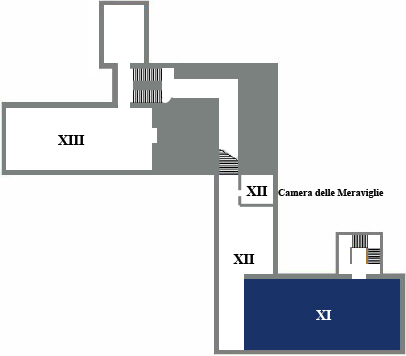
On display here in Room XI are most of the section of marbles and bronzes. Small sculptures and statuettes evoke Greek and Roman statuary, classical deities and religious themes. There are many bronze objects used for ornamental or domestic purposes, such as candlesticks, lamps, inkwells and door-knockers.
|
|
Gano di Fazio
Worshipping angel
c.1310
The greyish marble panel, first ascribed to Tino da Caiano, was then attributed to Gano di Fazio, an artist working in Siena between 1302 and 1318. The panel shows a framed angel with its right hand on its breast and its left hand at its side. In this relief the characteristics of the best early 14th-century Sienese sculpture can be perceived: virtuoso drilling of the thickly-spiralling locks, the effective spatial arrangement and a touching sentimental intensity. Gano's calm, simple plastic approach thus contrasts with the dramatic expressionism of Giovanni Pisano. The panel was probably part of a monumental complex perhaps designed for a tomb.
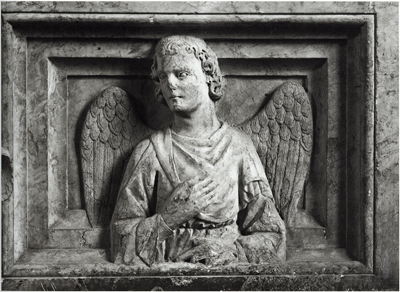
|
|
Severo Calzetta; Antonio Briosco
Toad; Lizards
16th century
The bronze Toad and Lizards were made using a mould from the life and are attributable to the respective workshops of Severo Calzetta and Antonio Briosco known as "il Riccio" (the Hedgehog). The repertoire of animals used for this particular type of casting included snakes and crabs besides lizards and toads. It was a precise, delicate casting technique which allowed reproduction of skin texture without any need of further chiselling after casting. Small casts like these, which were extraordinary for their surprising realism, became extremely popular from the first half of the 16th century onwards, as desktop objects and amulets, and for the Wunderkammer.
|
|
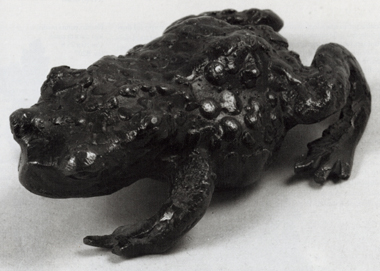

|
|
Workshop of Barthelemy Prieur
France
Navarre
end of 16th century
The two bronze busts, the work of the court sculptor Barthelemy Prieur, are allegories of France and Navarre, the two kingdoms ruled over by Henry IVth of France. The sovereign Henry IVth himself was probably originally shown in the centre of the pair of busts, with the two maidens gracefully turned towards him, but this part is now lost.
France wears the closed crown decorated with fleur de lys, and is dressed in a bodice with a royal mantle over her shoulder, held in place by bejewelled, quadrifoil buckles.
Navarre instead wears a simple, square-necked robe with a mantle draped over her right shoulder. This museum is the only one possessing both parts of the pair of sculptures.
|
|
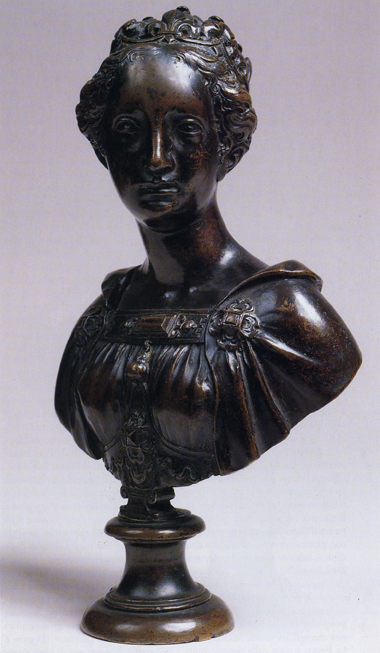
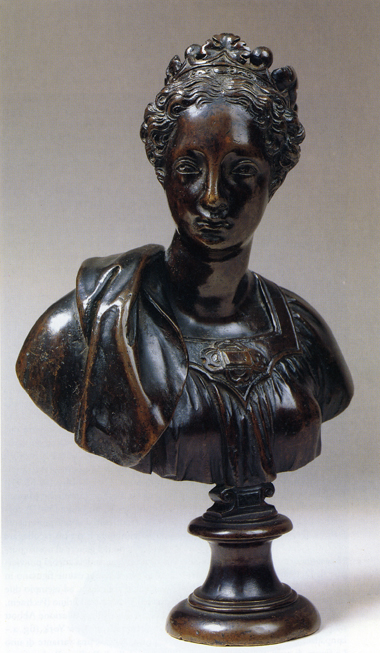
|
|
Andrea del Verrocchio (follower of)
Escutcheon-bearing squire
end of 15th century
The solid bronze sculpture representing an Escutcheon-bearing squire is attributable to Andrea del Verrocchio or one of his followers. Originally used as a doorstop, it was produced in Rome around the end of the 15th century. In fact the coat-of-arms held by the squire is that of Pierre d'Aubusson, Grand Master of the Order of the Hospitallers of St. John of Jerusalem and Rhodes from 1476 to 1503. This important statuette thus dates to this period. There are strong echoes of another two similar sculptures conserved in Rome in Palazzo dei Conservatori, also designed as doorstops.
|
|
Master of the Fitzwilliam Museum"
Neptune
17th century
The crowned Neptune raises his arms in the act of plunging his trident into the waves. The facial features, the hairstyle and the protruding, wavy eyebrows are rendered with great skill. The iconographical type, deriving from a monumental bronze statue by Stoldo Lorenzi (1565-1568), was reused by Bernini for the celebrated marble statue of Neptune and Triton (c. 1620). The statuette, whose style, scale and execution reveal it to be the work of the Master of the Fitzwilliam Museum, was probably paired with a similar one perhaps representing Mars.
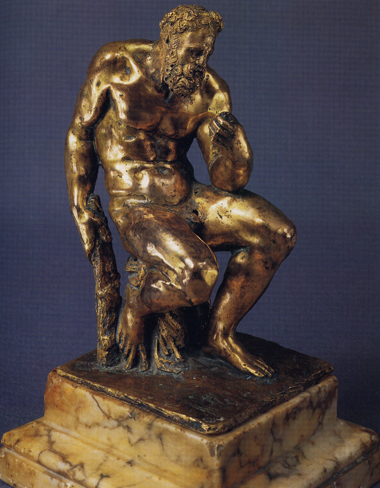
|
|